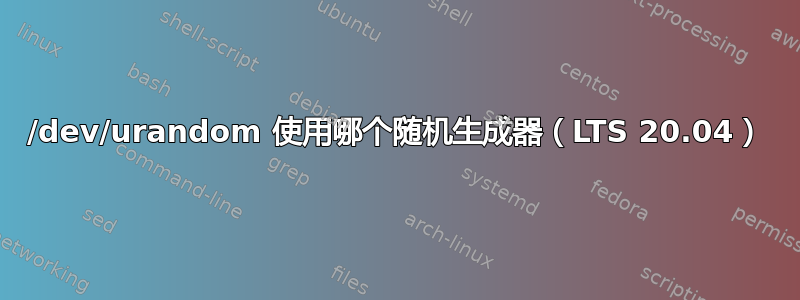
我对 Ubuntu LTS 20.04 中使用的标准加密安全随机生成器感到好奇/dev/urandom。有人能说出标准名称或为我提供可以找到更多信息的参考资料吗,例如源代码?
答案1
那就是“内核的随机数生成器”如所述man 4 random, urandom:
字符特殊文件 /dev/random 和 /dev/urandom(自 Linux 1.3.30 开始出现)为内核的随机数生成器提供了接口。文件 /dev/random 的主设备号为 1,次设备号为 8。文件 /dev/urandom 的主设备号为 1,次设备号为 9。
随机数生成器将来自设备驱动程序和其他来源的环境噪声收集到熵池中。生成器还会估计熵池中的噪声位数。从这个熵池中,可以创建随机数。
更多内容请参阅内核相关源文件的程序员注释random.c:
* This routine gathers environmental noise from device drivers, etc.,
* and returns good random numbers, suitable for cryptographic use.
* Besides the obvious cryptographic uses, these numbers are also good
* for seeding TCP sequence numbers, and other places where it is
* desirable to have numbers which are not only random, but hard to
* predict by an attacker.
*
* Theory of operation
* ===================
*
* Computers are very predictable devices. Hence it is extremely hard
* to produce truly random numbers on a computer --- as opposed to
* pseudo-random numbers, which can easily generated by using a
* algorithm. Unfortunately, it is very easy for attackers to guess
* the sequence of pseudo-random number generators, and for some
* applications this is not acceptable. So instead, we must try to
* gather "environmental noise" from the computer's environment, which
* must be hard for outside attackers to observe, and use that to
* generate random numbers. In a Unix environment, this is best done
* from inside the kernel.
*
* Sources of randomness from the environment include inter-keyboard
* timings, inter-interrupt timings from some interrupts, and other
* events which are both (a) non-deterministic and (b) hard for an
* outside observer to measure. Randomness from these sources are
* added to an "entropy pool", which is mixed using a CRC-like function.
* This is not cryptographically strong, but it is adequate assuming
* the randomness is not chosen maliciously, and it is fast enough that
* the overhead of doing it on every interrupt is very reasonable.
* As random bytes are mixed into the entropy pool, the routines keep
* an *estimate* of how many bits of randomness have been stored into
* the random number generator's internal state.
*
* When random bytes are desired, they are obtained by taking the SHA
* hash of the contents of the "entropy pool". The SHA hash avoids
* exposing the internal state of the entropy pool. It is believed to
* be computationally infeasible to derive any useful information
* about the input of SHA from its output. Even if it is possible to
* analyze SHA in some clever way, as long as the amount of data
* returned from the generator is less than the inherent entropy in
* the pool, the output data is totally unpredictable. For this
* reason, the routine decreases its internal estimate of how many
* bits of "true randomness" are contained in the entropy pool as it
* outputs random numbers.
*
* If this estimate goes to zero, the routine can still generate
* random numbers; however, an attacker may (at least in theory) be
* able to infer the future output of the generator from prior
* outputs. This requires successful cryptanalysis of SHA, which is
* not believed to be feasible, but there is a remote possibility.
* Nonetheless, these numbers should be useful for the vast majority
* of purposes.


